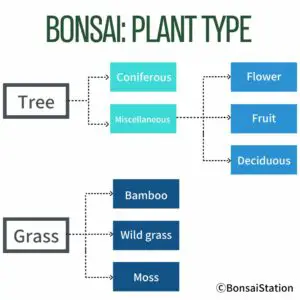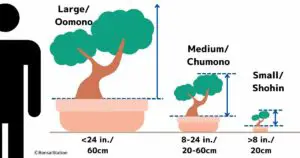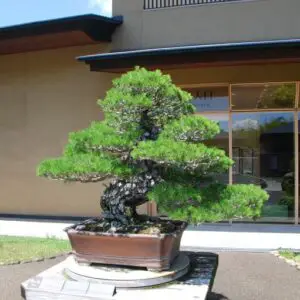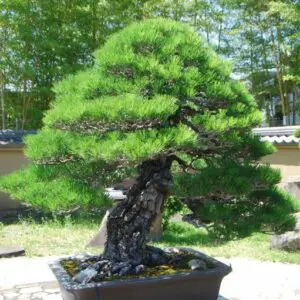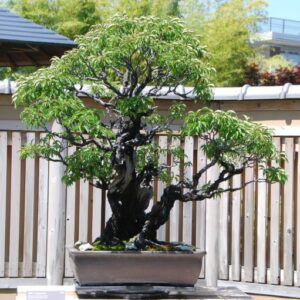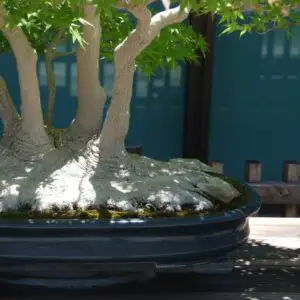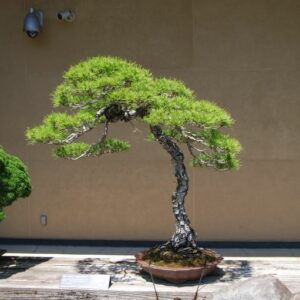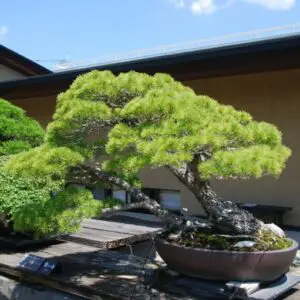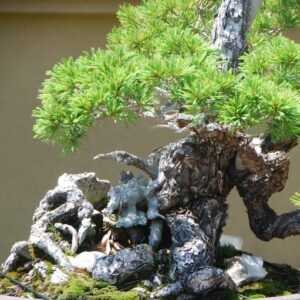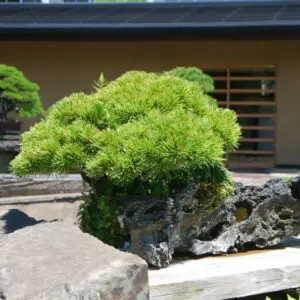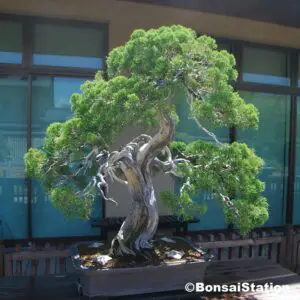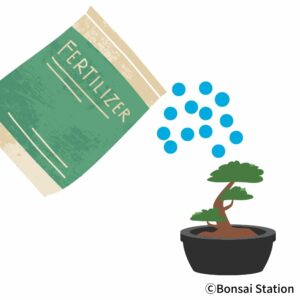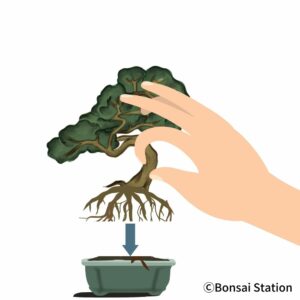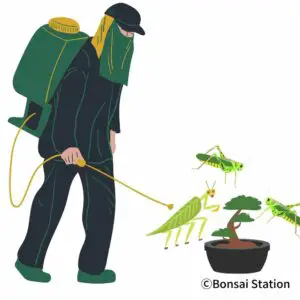Bonsai: Defined and Classified
What is bonsai?
Bonsai is the Art of Miniature Landscape: a natural landscape created with plants in a bonsai pot. It is not just a small tree planted in a pot. Everything- the tree, the soil, the moss and even the pot- is regarded as a reflection of nature’s beauty.
Bonsai actually originated in China more than 2000 years ago. It was brought into Japan about 1500 years ago and then perfected as a form of art.
The word “Bonsai” is Japanese; “bon” means pot/plate and “sai” means plant, thus a plant in a pot. But you cannot just place a plant in a pot and call it a bonsai. You need to design the style of the tree, its placement in the pot, and the balance and harmony between the style of the tree and the shape of the pot in order to make a tree a “bonsai”.
It seems complicated but designing a bonsai tree does not necessarily mean twisting the trunk with wire or cutting off branches. A plant in nature has its flaws. Bonsai design should not aim for perfect beauty, which does not exist in nature, but embrace what is around us as it is. Bonsai may not be “true” reflection of nature, of course, but it is something that makes you see nature while looking at it.
Bonsai and potted plants: similarities and differences
Similarities
Bonsai and potted plants have things in common since they are, after all, plants potted in a container. Those similarities are;
- Both place a plant in a container to admire its beauty.
- Plants are taken care of to make them look good.
- For plant health, soil, fertilizer, watering, type of pot, etc. have to be considered.
- The size and shape of the pot should match the plant.
Differences
Bonsai is, of course, different from potted plants. The biggest difference between bonsai and potted plants is that a potted plant is simply a plant placed in a pot, whereas bonsai allows you to associate nature with the plant.
Bonsai is a method of creating a natural landscape in a pot by combining plants with soil and pots. Making a bonsai is not just designing the shape of the tree. We also need to plan where to place the tree(s) in the pot, choose a pot that matches the tree taking into consideration of its color, shape and material, and the color of the soil that goes well with the tree.
Another difference is that we simply enjoy the beauty of a plant when we look at potted plants. Potted plants are prized for the charm and rarity of the flowers, fruits, leaves and stems.
In bonsai, on the other hand, the beauty of the tree as a whole is the object of appreciation; flowers and leaves are merely parts that make up a part of the whole. Bonsai does not necessarily deem a tree valuable because it has many lovely flowers or leaves with beautiful patterns.
Bonsai classifications
Bonsai can be classified by different criteria but the following three are the most common classifications.
- Plant type
- Tree size
- Tree Style
Plant type classification
By plant type, bonsai are largely divided into two as follows.
- Tree
- Grass
1. Tree

Coniferous tree (pine)
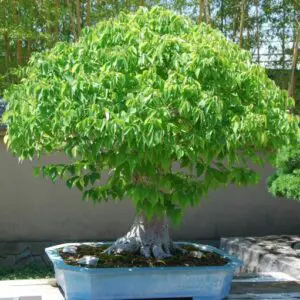
Miscellaneous tree (oak)
Tree bonsai are further classified into-
- Coniferous trees, and
- Miscellaneous trees
a. Coniferous trees
Coniferous trees are evergreens that have pine-like needle leaves and seed-producing cones. They have foliage year-round and do not shed all the leaves at once. Examples of coniferous bonsai trees include juniper, pine, spruce, and cedar.
b. Miscellaneous trees
Miscellaneous trees are further classified into-
b-1 Flowering trees,
b-2 Fruit trees, and
b-3 Deciduous trees.
Deciduous trees are those that shed leaves in fall. Flowering, fruit and deciduous trees often overlap each other because flowering trees often bear fruits and shed leaves in fall. But the trees are classified into one category depending on what we focus on the most for viewing; flowers, fruits or (color of) leaves.
2. Grass
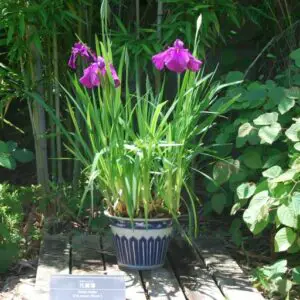
Grass bonsai (Kusamono) at Bonsai Museum
Though not as common as tree bonsai, there are bonsai that plant grass. Those grass bonsai are classified into-
- Bamboo
- Wild grass
- Moss
Grass bonsai is also referred to as “Kusamono”: something made of/from grass.
Size classification
Bonsai can be classified into several categories depending on their size. Despite the common belief, though, there is no agreement on the names to the exact sizes of bonsai. That said, the concept of its range is well-established, which are large (“Oomono”), medium (“Chumono”) and small (“Komono” or “Shohin”).
-
- Large-sized bonsai: 24 inches (60cm) or more.
- Medium-sized bonsai: between 8-24 inches (20-60cm)
- Small-sized or shohin bonsai: below 8 inches (20cm)
※Sizes are rough numbers.
Tree style classification
By tree style, bonsai are classified based on the trunk orientation, the number of trunks and the root design.
The following table is a list of some of the popular bonsai styles.
| Style name | Description | |
| Chokkan Formal upright |
Straight, upright, tapering trunk | |
| Moyogi Informal upright |
Curvy “S”-like trunk | |
| Shakan Slanting |
Straight trunk with an angle | |
| Sokan Twin trunk |
Two trunks rising from the same root system | |
| Kabudachi Multiple trunks |
Three+ trunks growing from a single point | |
| Netsuranari Sinuous root |
Multiple trunks connected to a single, exposed root system | |
| Kengai Cascade |
Tip of the tree falling below the base of the pot | |
| Bunjin Literati |
Bare, thin and slightly slanting trunk with branches only near the tip of the tree | |
| Fukinagashi Windswept |
Trunk(s) growing at a strong angle like being blown by a strong wind | |
| Neagari Exposed root |
Roots exposed as extensions of the trunk above the soil | |
| Yoseue Forest |
Multiple trees planted like a forest | |
| Ishizuke Bonsai-on-rock Root-over-rock |
Tree(s) growing from the crack(s) of a rock/ a tree growing on a rock with roots crawling down into the soil |
Are bonsai special trees?
A bonsai tree grows to be a normal size tree when planted in the ground because bonsai trees are not a special kind of tree that stay small when they are fully grown. In fact, most of the bonsai species can grow up to a few dozen feet (like pine or oak trees).
That said, some cultivars have more desirable characteristics as bonsai such as small leaves, short internodes, lots of ramifications, or a tendency to stay small compared to the standard tree when they are grown. Those trees are more inclined to be used as bonsai trees than other “normal” trees.
Also, there are some bonsai techniques that can make an ordinary tree stay small, including restraining the root system in a shallow pot as well as putting stress by wiring and defoliation. Using these techniques will significantly limit a tree’s growth and artificially mature it before it reaches its fullest potential.
The following post will explain in detail how bonsai trees stay small. If you are interested, please check it.
Are bonsai hard to grow?
Challenges of growing bonsai
It is difficult to say whether bonsai are hard to grow or not but one thing is certain. Compared to potted plants, bonsai need more attention and care. The biggest challenge for growing a bonsai tree as a beginner is watering as bonsai pots are tiny and the soil can easily be dried up.
It is often told that you should water your bonsai tree when the soil is half dry. But as a beginner, it might be hard to tell how moist the soil is, especially when the soil is covered with moss or ornamental sand. So you might be inclined to give too much water that causes root rot, or too less that causes the tree to wither.
In fact, the top reason for killing a bonsai tree as a beginner is a watering problem. But you do not have to be so afraid. If you nail watering, bonsai trees can grow well even without fertilizer.
Are bonsai trees good for beginners?
Keeping plants alive is a learned skill. If you have never grown plants before, it might be a little hard to grow bonsai trees at first. But there is no reason you cannot learn how to do it.
You might be wondering that keeping bonsai trees alive is one thing but training and keeping the style of bonsai trees is another. But again, you can totally learn how to do it while actually growing one. It might not come naturally to you but absolutely doable if you are interested.
There is plenty of information about growing bonsai trees on the internet and in books that you can easily obtain. There might also be a group of people near you that can help you with your journey on bonsai growing. You just have to look for it and learn.
If you want to know whether bonsai is an expensive hobby, this post might be helpful.
Beginners guide to bonsai care
To help you out and get you started on your bonsai care journey, I have put together a guide and helpful links on everything you, as a beginner, need to know about how to take care of bonsai trees.
When to start growing bonsai
Which time of the year to start bonsai is as crucial as which tree to grow. Early spring is the best time to start because repotting does the least damage to the tree. Repotting after you get a tree is necessary to promote the sound growth of your bonsai.
For more on this topic, the following post is helpful.
Bonsai care guide for beginners
Each bonsai have unique needs depending on the species but there are a few basic rules that should enable you to take care of the tree properly. There are six things you should consider:
-
- placing,
- watering,
- fertilizing,
- repotting,
- Styling and
- controlling pests and insects.
Placing
Except for a few indoor bonsai species, most bonsai trees are photophilic plants; i.e. plants that grow in open places and cannot withstand a long period of time in the shade. So, most bonsai trees should be kept outside with plenty of sunlight and airflow.
If you live in an apartment and do not have a backyard to keep bonsai trees, the only viable option without dedicated artificial light sources is alongside the window or balcony where they get at least 3 hours of sunlight a day.
If not, there are some indoor bonsai species that can be kept inside the house:
- Jade
- Ficus
The following article might be helpful to consider where you place your bonsai tree.
Watering
The general rule of watering a bonsai under a temperate climate is
-
- Once a day in spring and fall,
- Twice a day in summer, and,
- Once every three days in winter.
But this general rule should be altered depending on several factors such as the soil in which your bonsai tree is planted, the climate/weather of your region, and tree species and its growth stage. You need to observe your bonsai tree carefully and water them when the soil is half dry.
For more about watering a bonsai, please check the following article.
Fertilizing
Best bonsai soil should contain little or no organic matter and be able to hold the nutrients well when we fertilize it. If the bonsai soil is rich in nutrients, controling the strength of tree growth becomes harder since the trees can grow vigorously using abundant energy in the soil.
So the nutrients the trees need are to be added when it is necessary. How much to fertilize depends on the bonsai species as well as the stage of the tree growth but once or twice a month from spring to fall, except for hot summer is the average frequency.
Repotting
The purpose of repotting bonsai trees is to facilitate the growth of new roots. The roots absorb water and nutrients to support plants’ life and anchor the tree to the soil. By pruning old roots and changing the soil, roots can grow again that otherwise clot or rot.
Repotting is especially important for bonsai trees because they live in shallow, tiny pots in which trees tend to get root bound.
Frequency of repotting
The frequency of repotting a bonsai tree is as follows.
- Deciduous/ flower/fruit trees: every 1-2 years
- Coniferous trees: every 3-4 years
When to repot
In general, the best seasons for repotting are early spring (and probably fall).
-
- Deciduous trees: early spring before new sprouts (/late fall)
- Flower/fruit trees: early spring before new sprouts
- Coniferous trees: early spring before new sprouts (/early fall)
The following posts are a complete guide to repot a mini bonsai tree (the steps are the same for normal size bonsai trees) and to make a bonsai soil mix. If you are interested, please check the links below.
Styling
The styling of a bonsai tree is an important part of bonsai care. This is done through wiring and pruning.
Wiring
Wiring in bonsai involves wrapping wires around the trunk, branches, and roots that make the fundamental shape of a bonsai tree. Wiring is the most effective and accurate technique among the methods of shaping bonsai trees.
The purpose of wiring is to form and fix a tree in a desirable shape as a bonsai by bending and stretching branches and trunk to an angle, direction, and shape. It is necessary to make a normal tree appear aged and graceful.
The bonsai wiring technique has a relatively short history in the long history of bonsai. It began about 120 years ago when, by chance, a bonsai grower found a pine tree shipped from Osaka to Tokyo. The branches of this tree were wired to prevent them from being broken while shipping but the bonsai grower found that wiring can shape a tree in the desired form freely and very easily.
Since then, it is widely practiced to shape all kinds of bonsai trees.
Wiring, however, is more difficult than other shaping techniques. Doing it carelessly won’t achieve your desired goal. If you do it the wrong way, the wire won’t work at all.
And you should at least have a certain idea of what kind of bonsai is beautiful before starting wiring. Without it, your bonsai tree may end up as a very artificial tree with some twisted branches.
It is important to cultivate gradually an aesthetic sense of what kind of bonsai is beautiful to do wiring in an effective way.
Pruning
Pruning serves two purposes: (1) cutting branches unnecessary for styling, and (2) adjusting the growth of the tree and prolonging its life.
The first and obvious purpose of pruning is to form the shape of the tree so that it brings the appearance of an old tree.
The second purpose of pruning might not be so apparent but it is important to know. In general, the apex of the plant grows the strongest. So if a bonsai is left to grow, only the upper part of the tree grows, and the lower and inner branches wither or die.
For this reason, it is necessary to suppress the force of strong growing branches by pruning so that the overall growth is balanced. The tree will be healthier and live longer if done correctly.
One thing to know about pruning flowering and fruiting bonsai trees; if you make a mistake about which branches for how much to prune or when to prune, it may not bear flowers or fruits that year or the next. So, you might want to check how to do pruning before you start.
Controlling pests and insects
Some tree species are relatively resistant to pests and insects but others are prone to infestation. To prevent bonsai trees from pests and insects, you should;
-
- keep the tree healthy
- prune the tree at the right time
- protect existing trees when you buy a new one, and
- use insecticide/ pesticide regularly.



